|
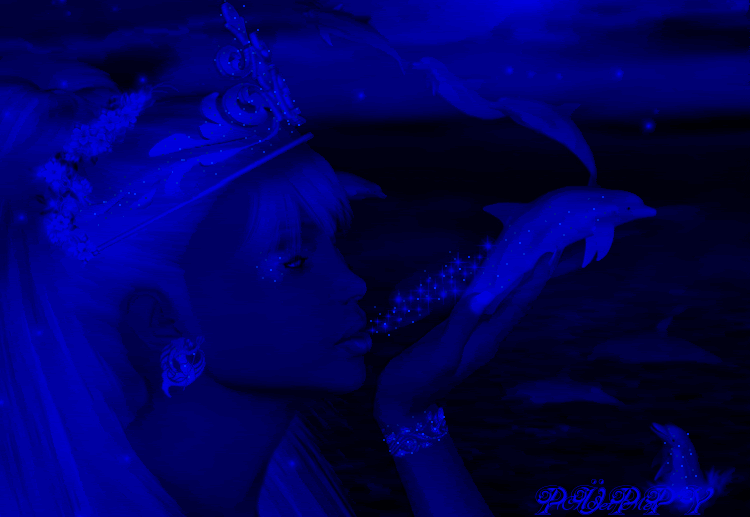
"And when the day comes that we can communicate intelligently with dolphins, they may introduce us to the concept of survival without aggression, and the true joy of living, which at present eludes us. In that circumstance what they have to teach us would be infinitely more valuable than anything we could offer them in exchange."
~Horace Dobbs~
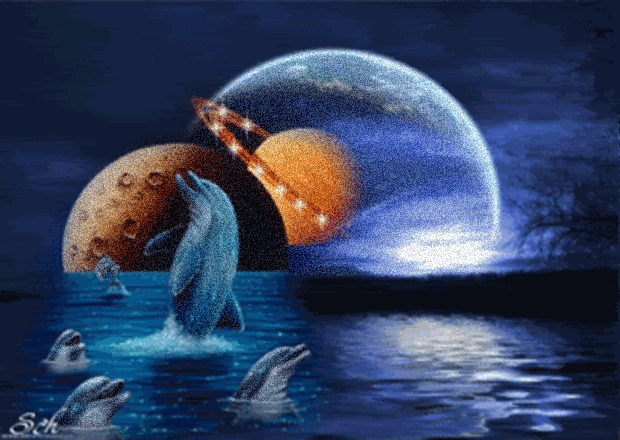
       
Considered the "king of fish" by many ancient cultures, dolphin meaning is closely associated with kingly qualities. Not the dominating kind. Observe the dolphin for any length of time and you know if dolphins ruled the world they would be gracious in their reign.
And that is the core theme to dolphin meanings. Grace.
Indeed, Christian symbolism conveys the dolphin as an aspect of Christ. Dolphins seen in Christian art are symbolic of resurrection. Some artists utilize the protective, stabilizing, compassionate demeanor of the dolphin as a message of well being to the pure of heart. Some artistic renditions speak of dolphins transporting the spirits of the faithful to Christ's side upon leaving their physical bodies.
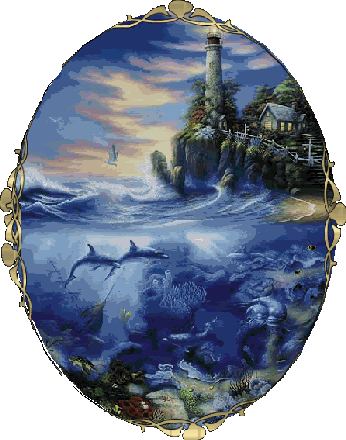
This dolphin meaning is mimicked in ancient Greece where legend tells us the dolphin was responsible for carrying the souls of the dead to the Islands of the Blessed.
This is a key understanding because the dolphin meaning is connected with themes of duality. It has to do with the dolphin being both fish and mammal. It is both of the water, and an air breather. Ergo, dolphin symbolism talks to us about "being in two worlds at once." Indeed, the dolphin is a great conveyor of the concept of yin and yang.
Greek myth indicates Dionysus was known to turn himself into a dolphin and transported the shrine at Delphi where the cult of dolphin worshippers convened.
The term delphi is noteworthy as the Greek word for dolphin is delphis and its derivative, delphys means womb. This incorporates more lunar and feminine attributes to the dolphin scene.
In Celtic Animal Symbolism, the dolphin as a highly honored creature as it was seen as the protector of sacred wells and sacred waters. The dolphin, to the Celtic mind, is the watcher of the waters, and the guardians of all things water-associated.
 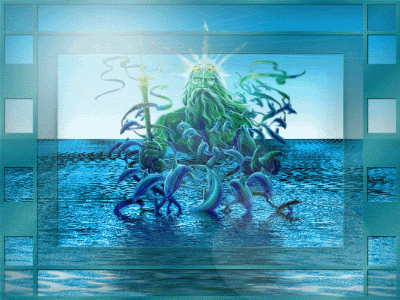 
Pirate lore also hails the dolphin as a symbol of protection. Indeed, legend admits dolphin sightings were often exaggerated into incredibly, fantasies of mermaids. Sailors often understood the spirit of mermaids lived in the heart of the dolphin, and ancient stories of the sea refer to dolphins metamorphosing into beautify sea maidens (and mermaids) if seen under just the right conditions.
Whether this is true or not remains to be confirmed. What is true is countless tales of dolphins interacting with humans in friendly, even protective ways. This colors the dolphin meaning in hues of compassion, caring, community and generous spirit in reaching out to connect with another species.
source:
http://www.whats-your-sign.com/dolphin-meaning-dolphin-symbolism.html

Dolphin intelligence
If you were to step out into the street and ask the first ten people you see whether or not they believed dolphins were creatures of intelligence, 8 of 10 would probably say yes. If you ask two scientists the exact same question, you just may be opening up a debate that could last for hours.
Most scientists to-date have refused to take a firm stand on the intelligence level of the dolphin, and although many will admit that dolphins seem to be intelligent creatures, it is not a proven fact. The biggest problem researchers are running into seems to be the actual definition of intelligence.
Darwin's theory bases intelligence on the ability of a species to recognize what it needs to survive, while other schools of thought believe the the size and architecture of the brain, the ability to communicate, or the ability to exhibit playfulness are the indicators.
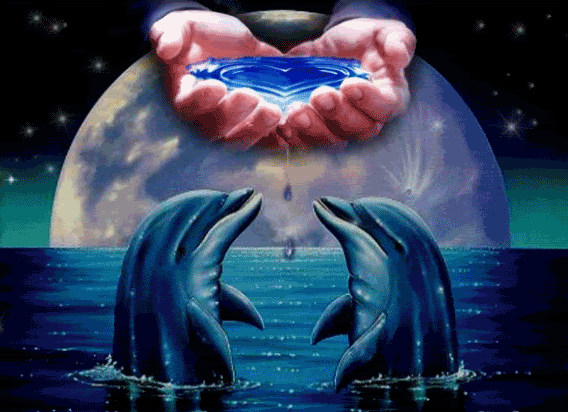
When studying the neo-cortex of the dolphin, which is the outside surface of the brain that is responsible for forming perceptions, memories and thoughts, dolphins have more convolution than the most intelligent humans. It is thought that dolphins may also be able to use the hemispheres of their brain separately as they have separate blood supplies which is something that is exclusive only to the dolphin. To add more weight to this supposition, dolphins are also able to move their eyes independently which has lead some researchers to suggest that the dolphin may actually be able to sleep with one side of it's brain at a time.
Some researchers have suggested that the size and complexity of the brain at birth is a better measure of intelligence. If that research holds up, however, once more the dolphin comes out on top. The bottle-nose dolphin has a brain mass at birth that is 42.5% of that of an adult humans brain mass. Humans at birth have 25% of their adult counterparts. At 18 months, the brain mass of the bottle-nose dolphin is 80% of the adult human, who doesn't usually achieve this level until the age of three or four.
While the research that has been obtained certainly makes it look like the dolphin may be the closest to our own level of intelligence, it may be quite some time before it's actually prove. Until then, they're true capabilities will remain a mystery.
source:
http://ezinearticles.com/
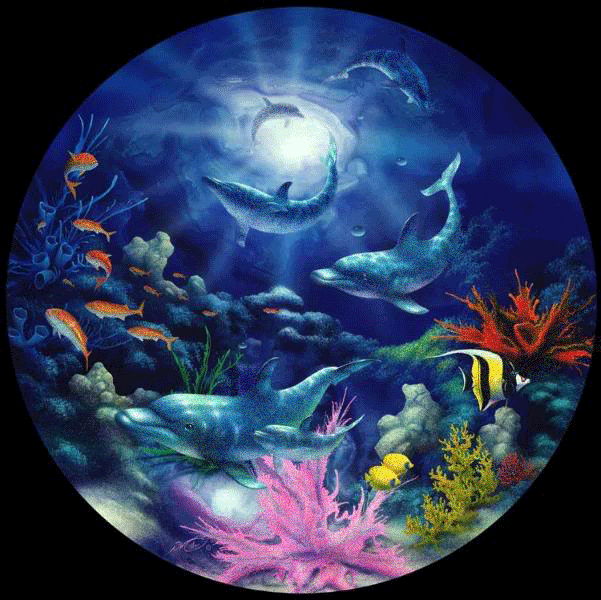
Dolphin Rescuing Humans
Dolphins are social animals, living in groups called pods and taking loving care of their babies. They are also known to be very friendly to humans; only two cetacean attacks of people are recorded, one a killer whale mistaking a surfboard for a seal and the other a cranky dolphin who had just given birth and been separated from her baby by her trainer. (In the first case, the whale did a double-take and swam off, and in the second, the dolphin just nipped the trainer.) With these sorts of dispositions, it's not really odd that dolphins should be credited with rescuing people. But do they really?

Dolphin Heroes
In Greek stories and old sea stories, there are dozens of claims of dolphins helping drowning sailors, rescuing people from sharks, and making themselves useful as guides through treacherous waters. The "treacherous waters" guiding can be ascribed to the dolphins needing a similar water depth as many boats.
Dolphins and other cetaceans also help injured members of their family groups and newborn babies to the surface by swimming under them and nudging upward, just as some reports describe them doing with humans. Interestingly, there are some real reports of dolphins helping other cetaceans. In 1983 at Tokerau Beach, North-land, New Zealand, a pod of pilot whales ran aground during ebb-tide. The Zealanders who lived there came out and did their best to keep the whales alive, sponging their skin and calming them, until the tide came back in. But even then the whales were having trouble orienting.
Dolphins came to the rescue. Somehow, a pod of dolphins who were nearby figured out what was happening. They swam into the shallows, putting themselves at risk, and "herded" the pilot whales out to sea, saving 76 of 80 whales. Five years earlier, a similar incident had occurred at Whangarei harbor. If dolphins are smart enough and helpful enough to save other cetaceans in that manner, why not humans.

Real-Life Cases: Dolphins Saving Humans
You've seen it in Flipper and other popular culture stories; dolphins rescuing humans from drowning or sharks, keeping them safe from harm. But does it really happen?
The answer is, surprisingly often.
Several years ago, in the Gulf of Akaba, a British tourist was rescued by three dolphins from sharks. Near the Sinai Peninsula, a ship captain had stopped his boat so several passengers could watch dolphins playing. Three of the passengers decided to swim with them, and one stayed a little longer than the others. To his horror, he was bitten by a shark and more were coming. Suddenly, three dolphins placed themselves between the tourist and the sharks, smacking the water with tails and flippers, and drove the sharks off so the man could be rescued.

In 2004, a group of swimmers were confronted by a ten-foot great white shark off the northern coast of new Zealand. A pod of dolphins "herded" them together, circling them until the great white fled. There are several other examples from the area of Australia of similar incidences.
In another case in the Red Sea, twelve divers who were lost for thirteen and a half hours were surrounded by dolphins for the entire time, repelling the many sharks that live in the area. When a rescue boat showed up, it appeared that the dolphin pod were showing them where the divers were; they leaped up in the air in front of the rescuers, jumping toward the lost people as if to lead the boat onward, according to old stories, they often did this with endangered ships in treacherous water.
Because we can't talk to dolphins, we can't really fathom what their motives are in these situations. It is, however, very possible that they are indeed trying to help and protect fellow mammals in the ocean to safety. If this is true, it means that they are the only animals, besides humans, which show true altruism.
source:
http://www.dolphins-world.com/Dolphins_Rescuing_Humans.html
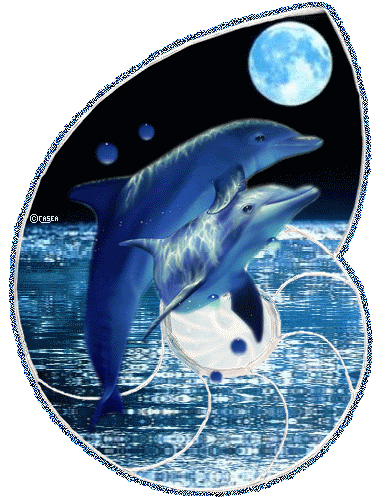
background and graphics by:
  


|